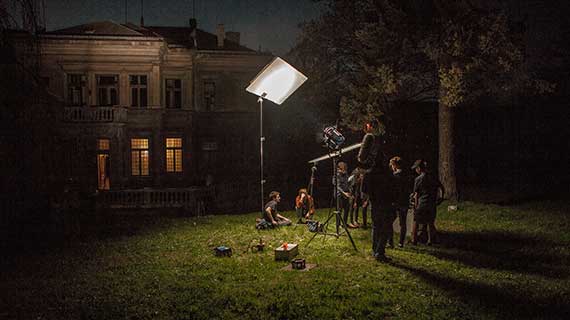Studio FAMU


The Quantum StorNext solution enabled us to centralize our storage, provide easy access to files, and enforce some discipline for the use of storage as part of the creative process.


Supporting State-of-the-Art Film Education at Studio FAMU
In addition to offering students a full range of state-of-the-art production, editing, and post-production tools, Studio FAMU must provide the data storage for numerous class exercises and large-scale film projects produced during the school year. “We support approximately 450 projects every year, which requires a lot of storage,” says Ondřej Šejnoha, director of Studio FAMU.
Until a few years ago, managing and protecting all of that data was extremely challenging, largely because the studio lacked a centralized storage environment. “We had a variety of separate storage systems and collections of hard drives, and students would just store their projects anywhere,” says Šejnoha.
The studio also lacked a robust, integrated archive system, which made it difficult to preserve student work over the long term. “Because we are part of a public university, and we are using public money, we must follow strict rules about keeping work,” says Šejnoha.
In 2016, when the studio began a major physical renovation project, Šejnoha saw an opportunity to revamp storage. He wanted a centralized environment to support the entire production and post-production workflow. It had to provide easy access to files, offer scalable capacity for large volumes of high-resolution media, integrate with an archive solution, and work well with a media asset management (MAM) system.
Centralizing Storage With Quantum StorNext
With assistance from IT service provider AGORA PLUS, Studio FAMU selected an end-to-end Quantum StorNext solution. The solution includes Quantum StorNext storage plus a Quantum i500 tape library, all powered by the StorNext file system and data management platform. The environment is seamlessly integrated with an ELEMENTS Media Library MAM.
“The Quantum StorNext solution enabled us to centralize our storage, provide easy access to files, and enforce some discipline for the use of storage as part of the creative process,” says Šejnoha.
The studio deployed a high-capacity environment that could accommodate rising volumes of high-resolution files plus a growing archive. A few years after the initial installation, the studio was ready to expand further. With StorNext, the studio can expand without ripping and replacing the existing infrastructure.
Providing Simple Remote Access to Projects
By creating a single, centralized storage environment, the StorNext platform helps provide students and faculty easy access to projects. “With StorNext and the integrated MAM system, students can access their work wherever they are—at home or the pub—from any kind of device,” says Šejnoha. “Professors can also view and evaluate work remotely. It’s much more convenient than moving around flash drives or external hard drives in a backpack.”
Remote access to work proved to be especially beneficial when the coronavirus pandemic reached Europe. “We’ve been very happy to have the Quantum solution during this challenging time. With Quantum StorNext, it’s very easy to share anything with students, professors, and other organizations—wherever they are in the world,” says Šejnoha.
Finding Projects Easily
In the past, keeping track of numerous student projects, spread out across multiple storage systems, was extremely challenging. But using a single, centralized StorNext environment in conjunction with an integrated MAM makes it simple to find student projects—even if students leave school for a few years and then return to continue their studies.
“Keeping everything in centralized Quantum storage makes it much easier to find student work than searching the shelves for some old hard drives,” says Šejnoha.
Protecting Data and Ensuring Long-term Preservation
Centralizing content helps Studio FAMU protect the projects in which students invest so much of their time. “Instead of relying on portable drives, we keep everything under control, under one roof,” says Šejnoha.
Using a tape archive gives Studio FAMU a scalable, secure means of preserving content for the longer term. “We park everything on tape for long-term archive,” says Šejnoha. “And with the StorNext platform, it’s easy to get content back from tape whenever we need it.”
Showcasing Student Work with a Few Clicks
The new storage environment helps provide the next step by enabling students, faculty, and departments to share student work beyond campus. “If an organization such as a film festival is interested in viewing a film, we can easily generate a link to content on the storage system—we don’t have to use messengers to deliver a film somewhere,” says Šejnoha. “StorNext and ELEMENTS give us a quick and easy way to share student work with the world.”


